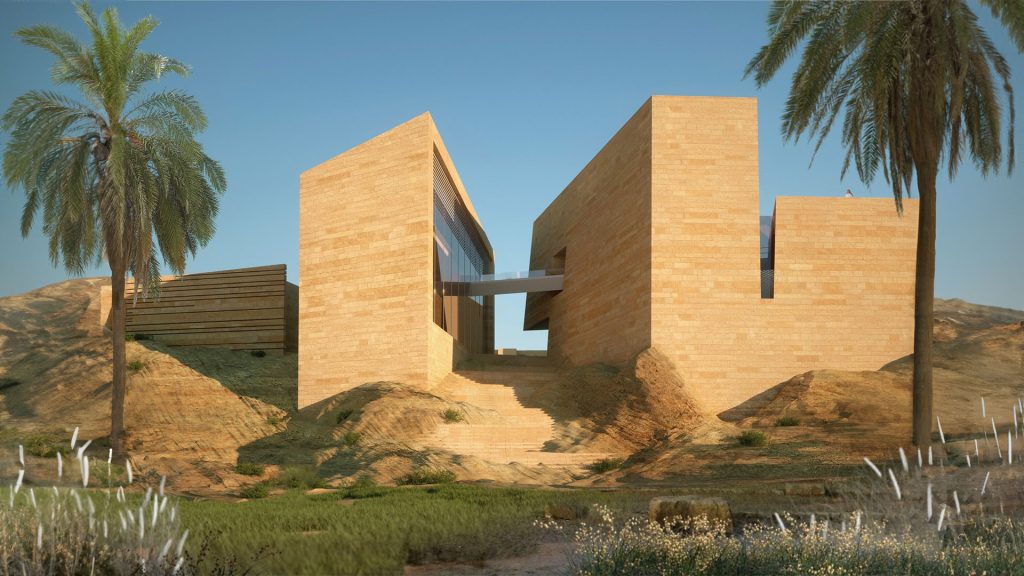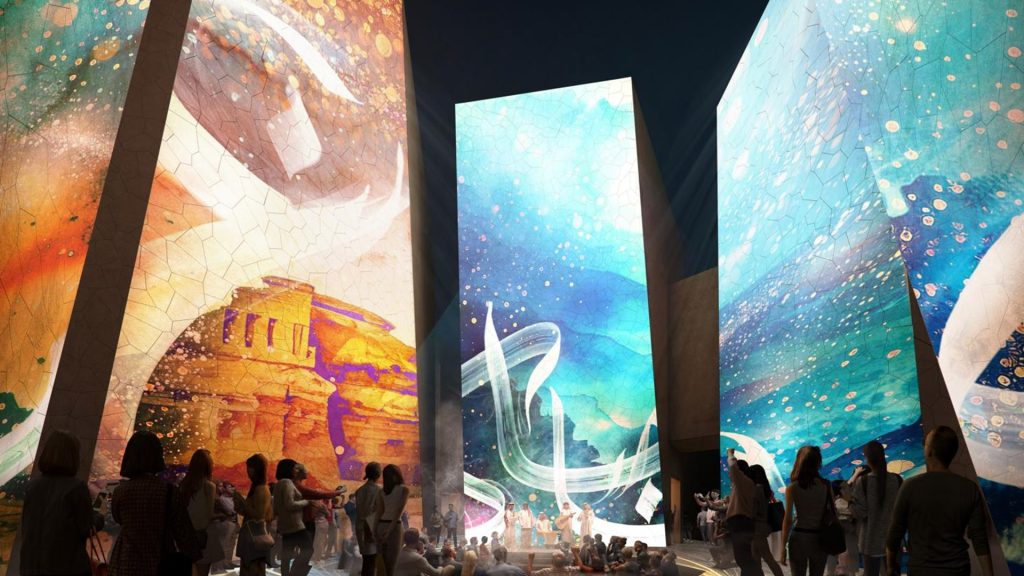Introduction
Delve into the rich tapestry of Saudi Arabian culture by taking a closer look at Najdi architecture, a style that has stood the test of time. This blog ‘Preserving Heritage: Exploring the Timeless Elegance of Najdi Architecture’ will explore the unique characteristics, historical significance, and enduring charm of Najdi architecture, shedding light on its contribution to the cultural identity of the region.
Table of Contents
Unveiling Najdi Architecture: An Overview
Najdi architecture, hailing from the heart of Saudi Arabia’s Najd region, has a storied history shaped by the nomadic lifestyle and challenging desert conditions. Originating from practical necessities, it has evolved into a unique expression of culture and identity over centuries.
The architectural style adapts to the harsh climate with distinctive features, setting it apart from other regional styles. Characterized by towering structures with flat or gently sloping roofs, Najdi buildings boast a silhouette optimized for desert living.
Local materials like clay, stone, and wood are employed, creating structures that seamlessly blend with the natural landscape. Intricate geometric patterns and calligraphy, reflecting cultural and religious symbolism, adorn many buildings, showcasing the artistry inherent in Najdi architecture.
Courtyard designs foster community and provide relief from the desert heat, and Islamic art principles are seamlessly integrated, contributing to the spiritual identity of the region.
Najdi architecture’s adaptability and sustainability, addressing climatic challenges, further distinguish it, making it a captivating blend of tradition, innovation, and environmental harmony. In essence, Najdi architecture stands as a testament to the resilience and creativity of the region’s inhabitants, preserving a unique cultural heritage that continues to inspire admiration and awe.
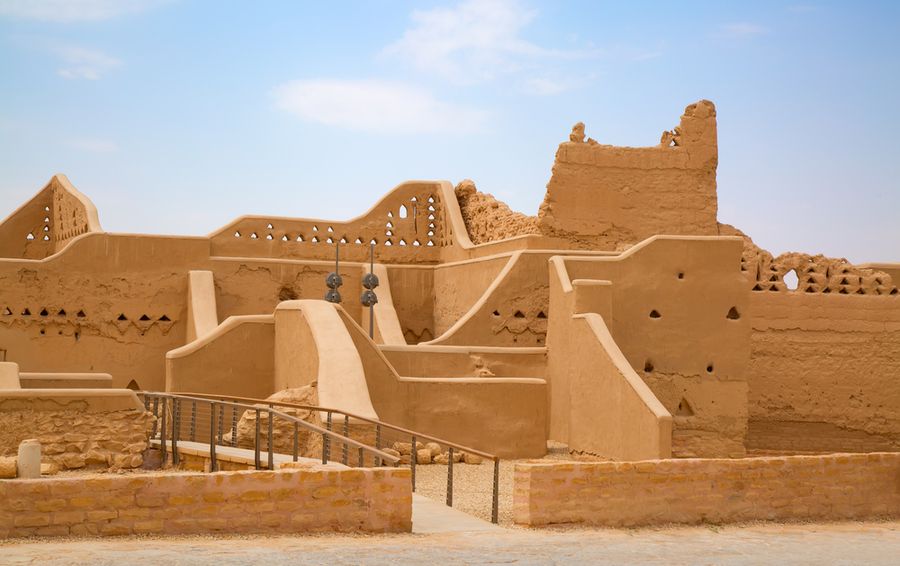
Materials and Techniques: Building with Tradition
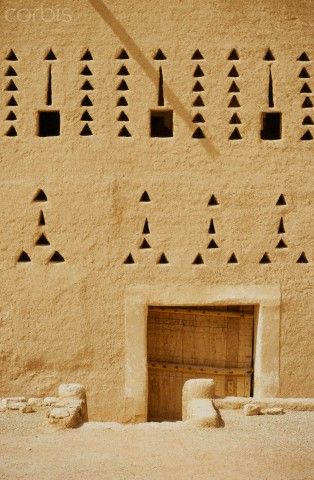
Najdi architecture strategically employs traditional materials and construction techniques that resonate with the challenging environmental conditions. Local materials like clay, sourced abundantly from the region, form a fundamental component.
The use of clay offers exceptional thermal mass, providing insulation against the scorching daytime temperatures and frigid nights prevalent in the Najd desert. Stone and wood, also locally available, contribute to the structures’ durability and aesthetic appeal.
The choice of these materials reflects an astute understanding of the region’s climate, allowing Najdi buildings to naturally regulate internal temperatures, ensuring comfort in extreme weather.
This harmonious integration of construction materials and environmental conditions not only underscores the sustainability of Najdi architecture but also exemplifies the resourcefulness and adaptability of the people to their unique surroundings, creating structures that stand resilient against the test of time and weather in the heart of the Arabian Peninsula.
The Symbolism Behind the Structures
Najdi architecture is a canvas where symbolic meanings intertwine with cultural, religious, and practical considerations, creating a rich tapestry of significance. Geometric patterns and calligraphic inscriptions, omnipresent in Najdi buildings, carry deep religious symbolism, often invoking verses from the Quran or expressing cultural proverbs.
The meticulous placement of these elements reflects a spiritual connection and a commitment to cultural identity. The design of buildings extends beyond aesthetics, embodying practical wisdom cultivated over generations. Courtyard layouts foster communal living, promoting social interactions and providing respite from the desert heat. Towers and fortifications not only serve as defensive structures but also symbolize the resilience of the community.
Najdi architecture, therefore, transcends mere functionality; it becomes a living testament to cultural values, religious beliefs, and the pragmatic adaptation of design to the harsh desert environment, showcasing an intricate blend of aesthetics and purpose deeply embedded in the architectural fabric of the Najd region.
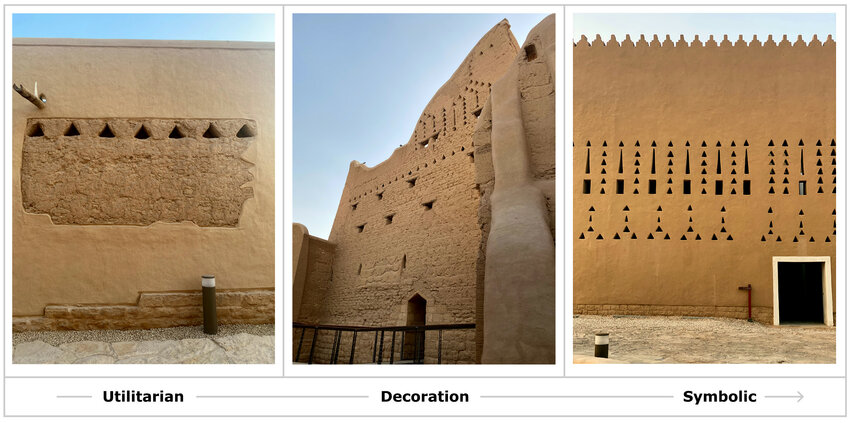
Historical Landmarks: Najdi Architecture in Context
Prominent historical landmarks in the Najd region stand as living testaments to the enduring legacy of Najdi architecture, weaving tales of cultural and social history. One such landmark is the Masmak Fortress in Riyadh, a quintessential example of Najdi military architecture, serving both defensive and administrative purposes. The intricate design of the fortress not only protected the city but also reflected the power and authority of its rulers.
Another notable structure is the Murabba Palace, showcasing the opulence and aesthetic finesse of Najdi architecture, serving as a residence for the royal family. These landmarks played pivotal roles in shaping the social and cultural history of Najd, acting as centers of governance, cultural exchange, and community life. They stand as architectural witnesses to the region’s resilience, cultural richness, and the ability of Najdi architecture to harmonize function and form in a way that transcends time.
Adaptation and Modern Influences
Najdi architecture, while deeply rooted in tradition, has demonstrated a remarkable adaptability to contemporary needs and influences. Modern structures in the Najd region often draw inspiration from traditional principles, creating a synthesis of heritage and innovation.
Iconic skyscrapers in Riyadh, such as the Kingdom Centre Tower, seamlessly blend modern design with Najdi influences, incorporating geometric patterns and elements reminiscent of traditional architecture. The King Abdulaziz Center for World Culture in Dhahran exemplifies a fusion of modernity and tradition, with its geometrically inspired exterior paying homage to Najdi design.
These examples showcase how Najdi architecture has evolved to meet the demands of contemporary living while preserving its cultural identity. By integrating traditional elements into modern constructions, these buildings serve as a bridge between the past and the present, embodying the enduring legacy and adaptability of Najdi architectural aesthetics.
Preservation Challenges: Safeguarding the Legacy
Preserving Najdi architecture amid rapid modernization poses significant challenges as urbanization and development reshape the Saudi landscape. The allure of modern construction materials and techniques often overshadows traditional methods, endangering the authenticity of Najdi structures.
Additionally, the increasing demand for urban spaces puts historical sites at risk of demolition. Efforts to safeguard Najdi architecture are underway, driven by a growing awareness of cultural heritage. Conservation organizations collaborate with local communities, utilizing advanced technologies to document and restore key landmarks.
Educational initiatives emphasize the importance of architectural preservation, fostering a sense of pride and responsibility within the population. Striking a balance between development and preservation remains a delicate task, prompting policymakers to implement regulations that protect heritage sites.
These concerted efforts, blending technology, community engagement, and legislative measures, aim to ensure that Najdi architectural gems endure as cherished symbols of Saudi Arabia’s rich cultural history amidst the tide of modernization.
The Global Influence of Najdi Architecture
Najdi architectural elements have transcended regional boundaries, leaving an indelible mark on global architecture. The design principles of Najdi architecture, with their emphasis on both form and function, have influenced architects worldwide.
Elements such as intricate geometric patterns, courtyard layouts, and the use of local materials have inspired contemporary designs in diverse cultural contexts. In the realm of international architecture, the influence of Najdi aesthetics can be seen in the integration of traditional patterns in modern skyscrapers and public spaces.
This cross-cultural exchange highlights the timeless appeal and adaptability of Najdi architectural elements, showcasing how a regional style can resonate globally, transcending boundaries and contributing to the diverse tapestry of architectural expression worldwide.
Traveler’s Guide: Exploring Najdi Architectural Wonders
These are some the best ways to experience Najdi’s architectural wonders:
- Guided Tours: Enjoy guided tours led by local experts to gain in-depth insights into the historical and cultural significance of Najdi architecture.
- Visit Heritage Villages: Explore heritage villages, such as Diriyah in Riyadh, to witness well-preserved traditional Najdi architecture and experience the ambiance of historical settings.
- Attend Cultural Festivals: Time your visit to coincide with cultural festivals, where traditional architecture often takes center stage through exhibitions, workshops, and performances.
- Explore Open-Air Markets: Wander through traditional souks and markets to see how Najdi architecture influences commercial structures, with intricate designs and vibrant colors.
- Stay in Heritage Hotels: Choose accommodations in heritage hotels or restored traditional houses to immerse yourself in the authentic Najdi architectural experience.
Key Destinations:
- Masmak Fortress, Riyadh: A symbol of Najdi resilience, this fortress showcases military Najdi architecture and its historical significance.
- Murabba Palace, Riyadh: Explore the opulence of Najdi architecture in this royal residence, adorned with traditional designs and beautiful courtyards.
- King Abdulaziz Historical Center, Riyadh: This center offers a comprehensive display of Najdi architecture, providing a visual journey through the region’s cultural heritage.
- Old Town, Al-Ula: Wander through the ancient streets of Al-Ula to witness well-preserved Najdi architecture amidst stunning natural landscapes.
- Heritage Village, Dariyah: Experience the charm of a reconstructed Najdi village, offering a glimpse into traditional daily life and architectural styles.
- Faisal Al Dayle Door: Crafted by renowned Saudi designer, Omar Al Nafisah, the Faisal Al Dayel door is a tribute to Saudi Arabia’s cultural heritage. Drawing from Najdi architecture, its intricate patterns showcase symmetrical shapes and earthy tones that harmonize with nature. Months of detailed work by skilled artisans resulted in a teak wood masterpiece, epitomizing the rich history and architectural traditions that have shaped Saudi society for centuries. This door stands as a testament to the country’s artistic brilliance and the enduring legacy of its cultural heritage.
By following these tips and exploring these key destinations, travelers can fully immerse themselves in the captivating world of Najdi architecture, gaining a profound understanding of its historical, cultural, and aesthetic significance.
Conclusion
As we unravel the timeless elegance of Najdi architecture, let its enduring beauty and cultural significance resonate. Embrace the call to appreciate and support preservation efforts, ensuring this architectural gem continues to inspire and enrich the cultural tapestry for generations to come.


